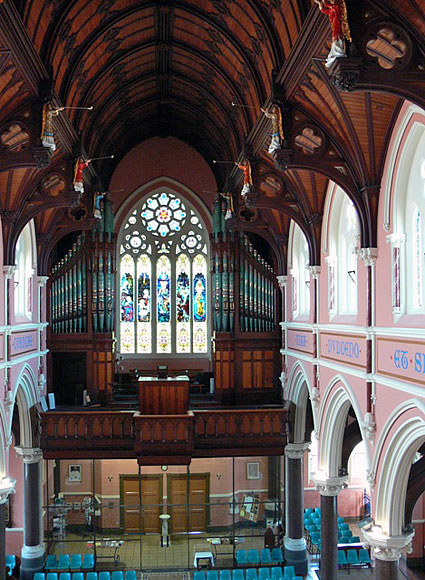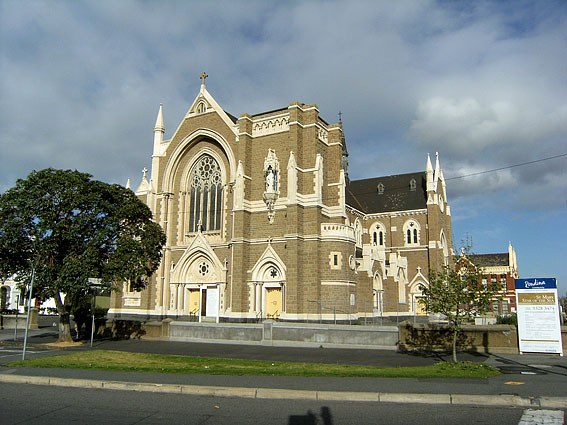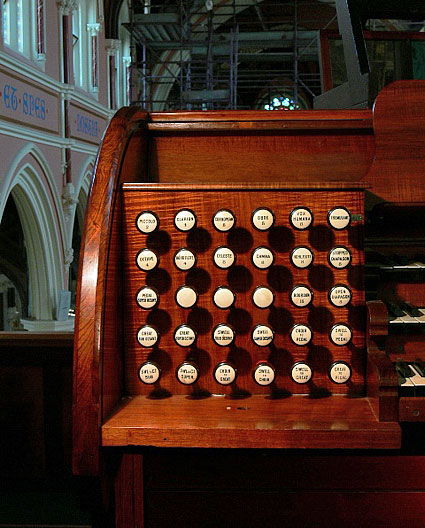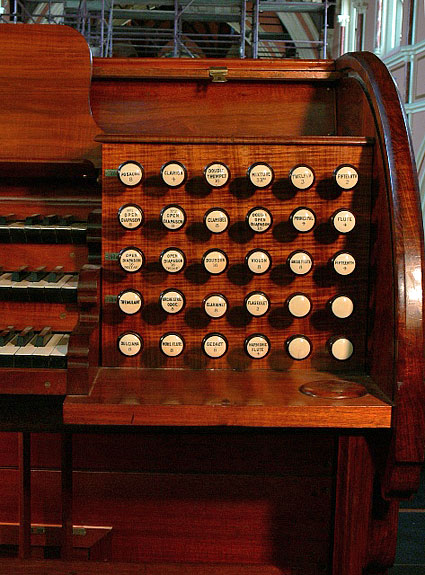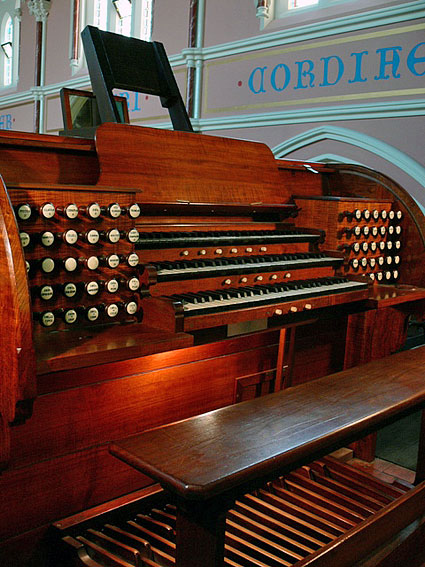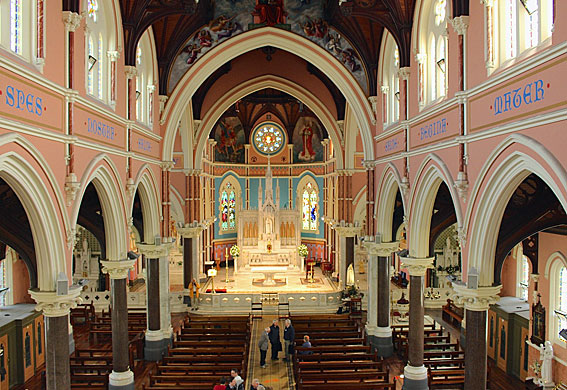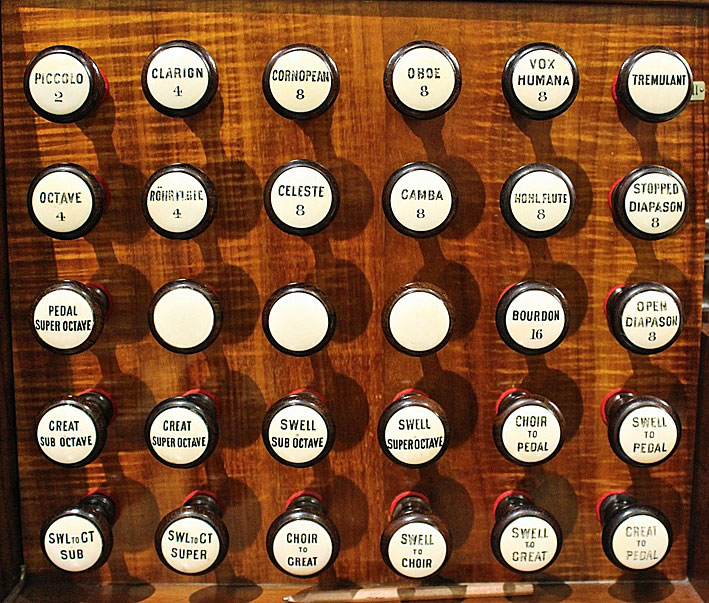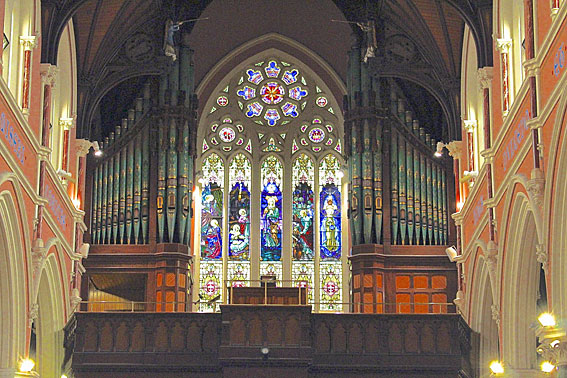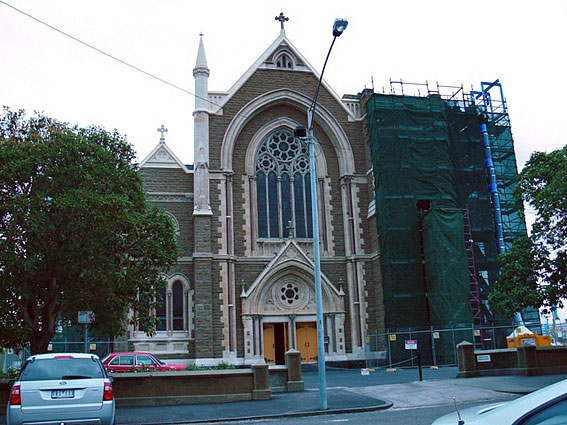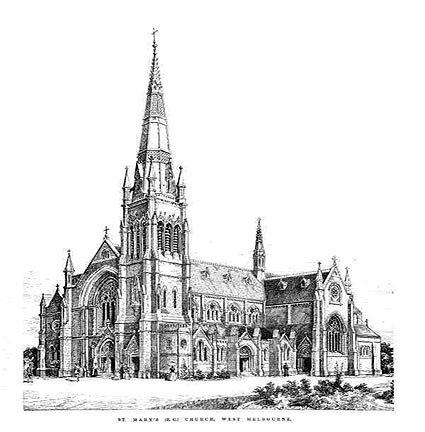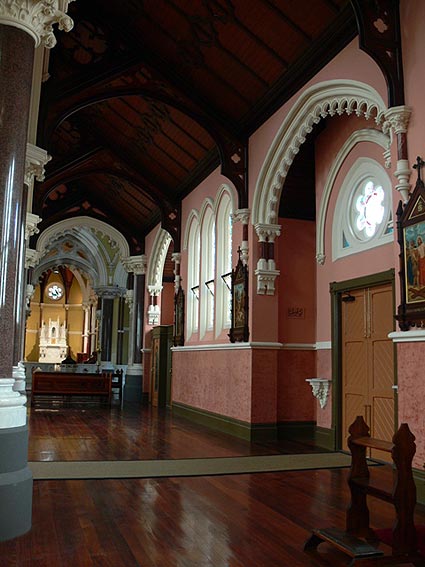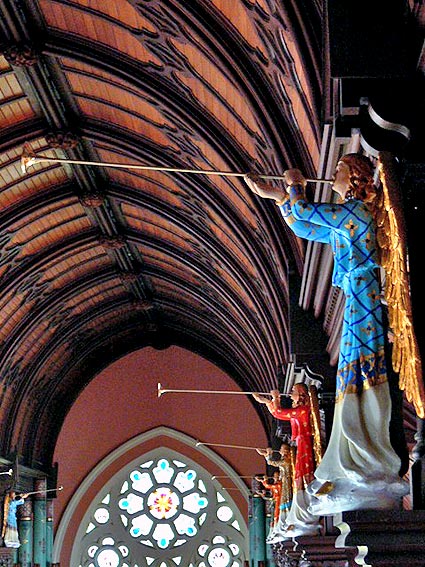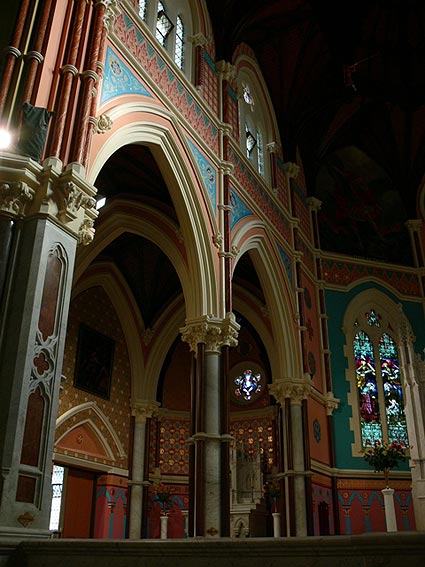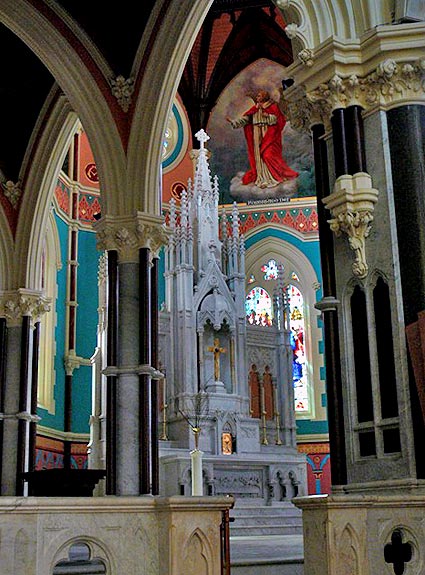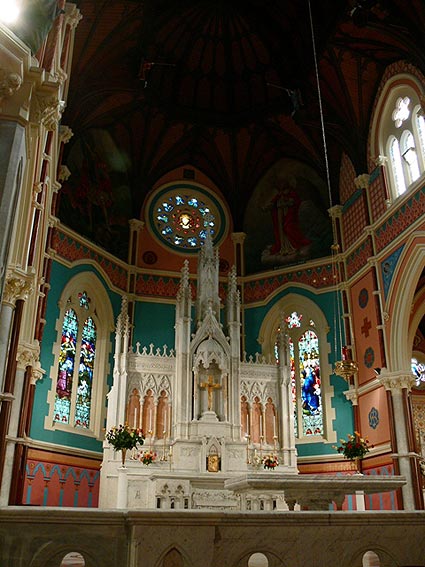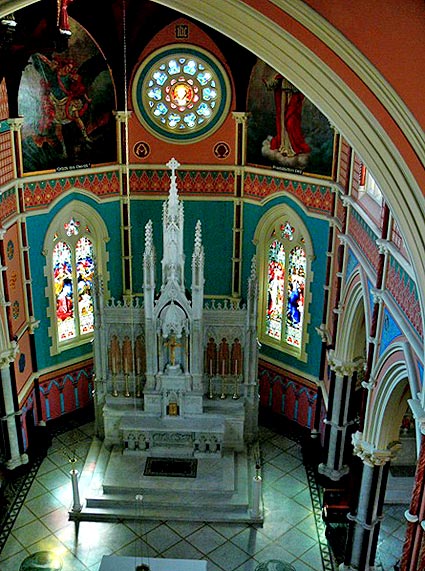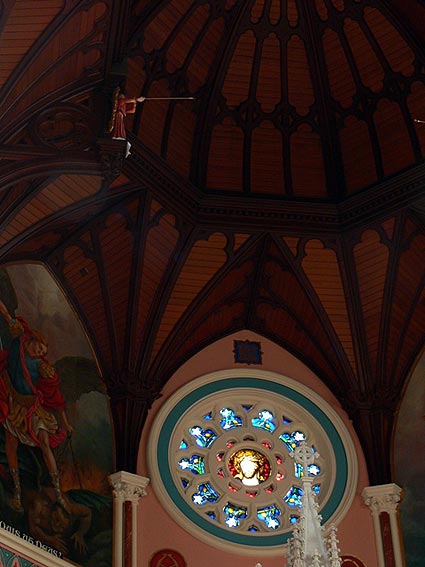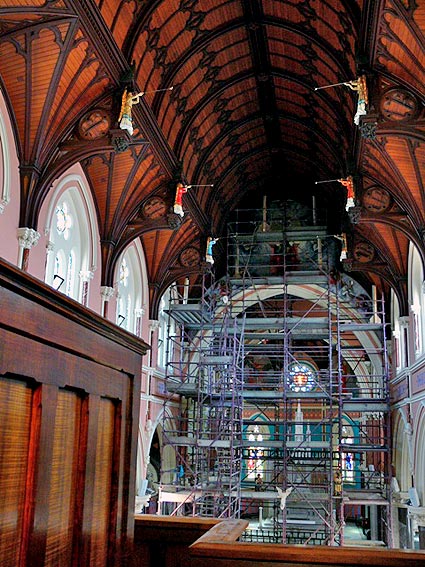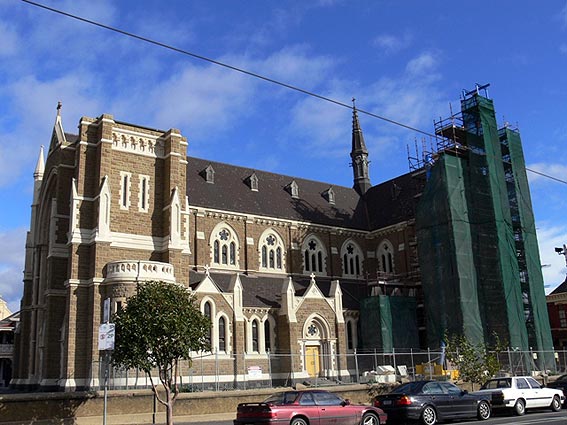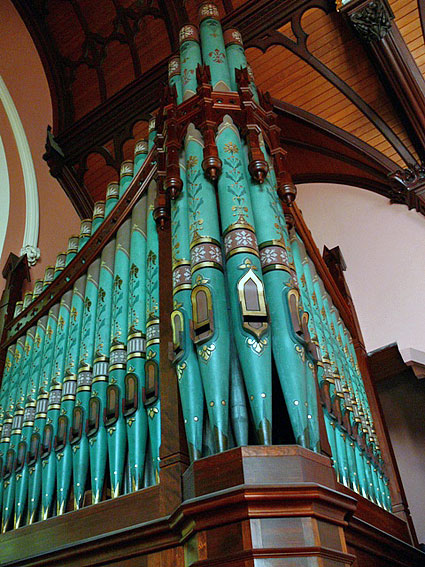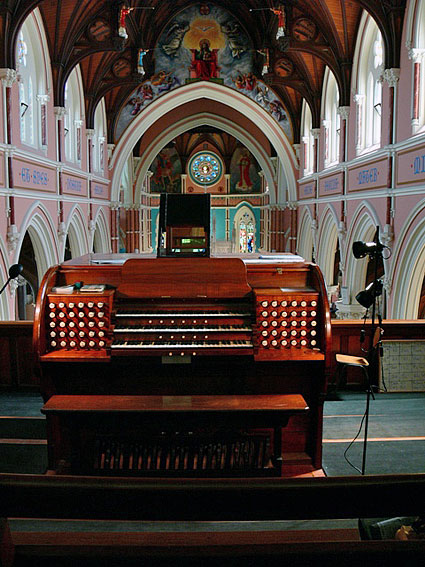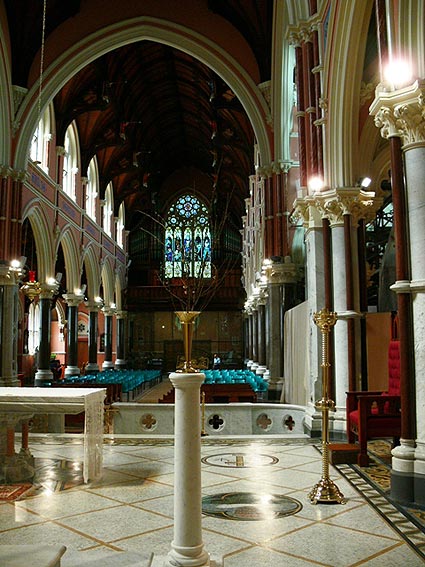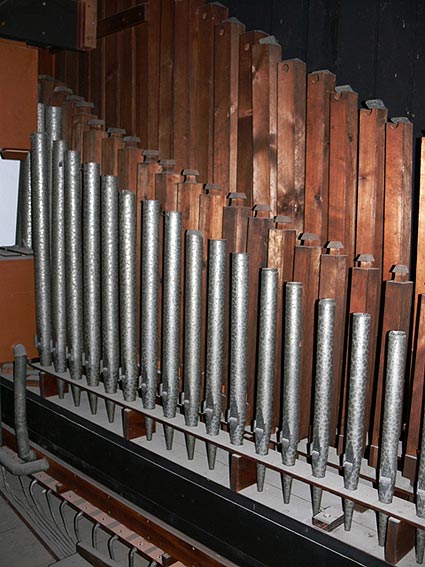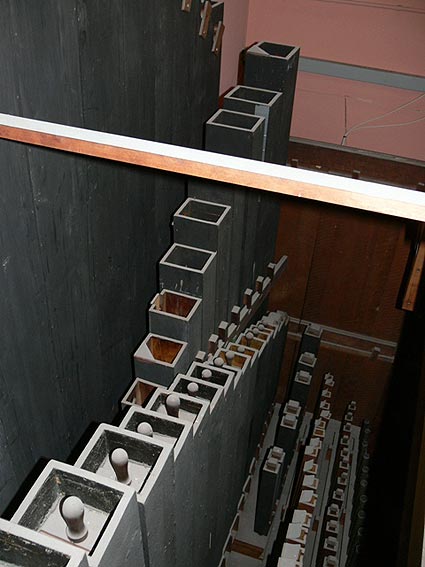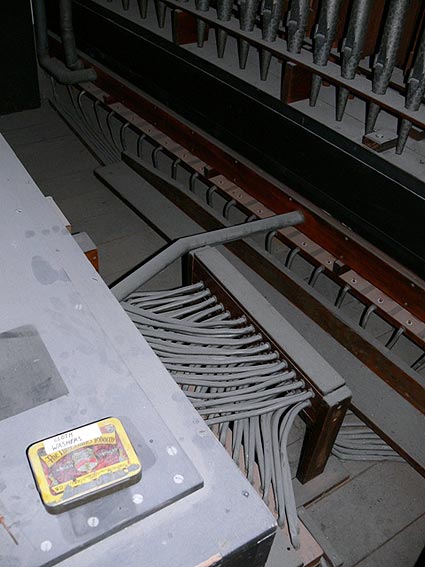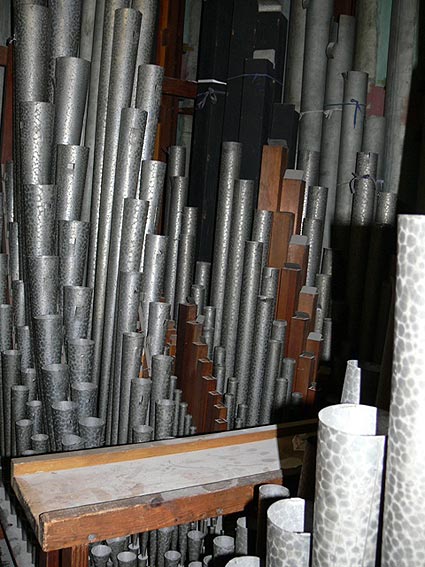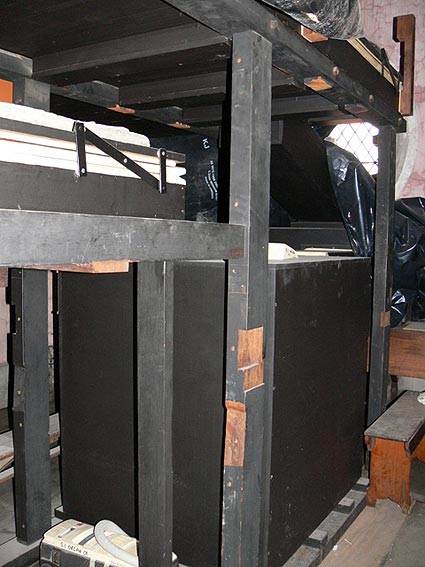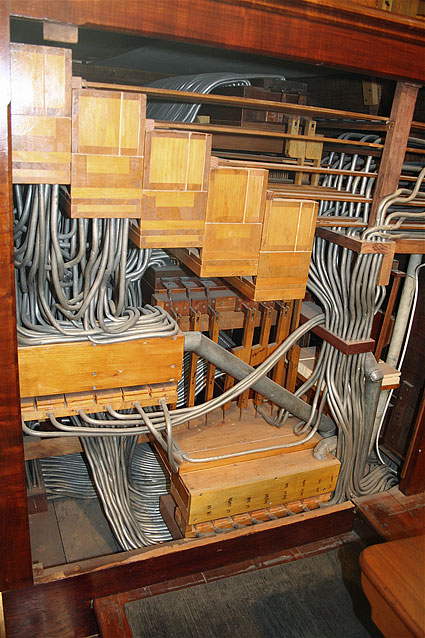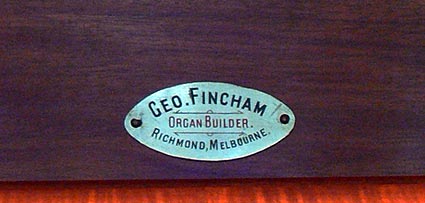The choir gallery provides ample accommodation for a large choir and instrumentalists, in addition to the organ, which was built by Mr. Fincham of Richmond. The instrument is complete, and contains about 2,500 pipes. It is built upon the pneumatic action from keyboard to stops and windchests. This action has entailed the use of no less than three and a half miles of tubing. The speaking pipes of the pedal, great and swell organ are 16ft, whilst in the choir organ they are 8ft. The labour of drawing and closing of the various combinations of stops is abolished. The organist, while fingering the key-board, uses the thumb to "press a button; pneumatic action does the rest." The richly-gilt and decorated pipes, and the stained case with the magnificent blackwood console, and the gallery front in blackwood and huon pine are a notable feature in the eastern end of the church. The cost of the organ was £1,600.
While building St Mary’s organ, in September 1899, Fincham suffered a paralytic stroke, from which he fully recovered. He admitted his son Leslie as a partner in the firm in 1900 which was henceforth known as George Fincham & Son. Fincham Sr continued to be actively involved as an organ builder until his death on 21 December 1910.
In May 1931 a cleaning and overhaul by George Fincham & Sons Pty Ltd took place at a cost of £200.00.0. In August 1931 balanced swell pedals were installed (these were converted back to trigger operation in the 1993 restoration as they worked very inefficiently and didn’t succeed in opening the horizontal shutters fully). In July 1948 the Fincham firm carried out further restoration work. This included new intermediate actions to the Swell, Great and Choir soundboards. The windchest pallets had originally been operated by external underactions placed closed to floor level and linked to the windchests by trackers. This obviated the need to run pneumatic tubing up to a higher level and resulted in shorter tube lengths and presumably faster action response. The 1948 work was executed in an unsatisfactory manner and the 1993 restoration saw the original mode of operation restored. The combination action was removed in the mid-1970s but all of the parts were stored and now replaced in the organ.
The comprehensive restoration of the instrument, by the South Island Organ Company Lid, of Timaru, New Zealand, began in early 1993 and the work was completed in September 1994, ranking as the most significant restoration project yet carried out on an Australian-built organ. The action, pipework and wind system were fully overhauled, while the later alterations were reversed. The casework was completely repolished, but the original stencilling was merely cleaned rather than repainted. It was the first pipe organ in Australia to be classified by the National Trust and is well regarded as an instrument of national importance. The organ is the largest example of 19th century colonial organbuilding to remain essentially unaltered.[3]
